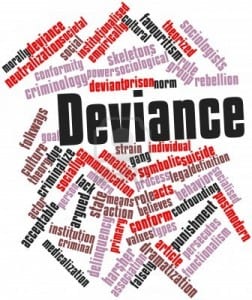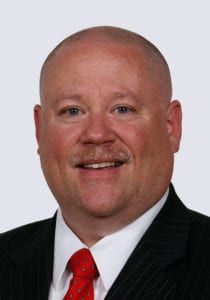
It’s an odd term – normalization of deviance. But the term and the premise behind the term provides a valuable explanation as to some of the behaviors we observe in the first responder world.
Defining the term
Normalization: To make normal; to make an established standard.
Deviance: Departing from the norm; performing in a non-standardized way.
Shortcuts
 When we are operating under conditions of stress and consequence, coupled with changing conditions and time compression, we can feel a sense of urgency and this can cause us to want to take a shortcut from safety best practices.
When we are operating under conditions of stress and consequence, coupled with changing conditions and time compression, we can feel a sense of urgency and this can cause us to want to take a shortcut from safety best practices.
Rationalization
We can rationalize that, because we are operating in conditions of stress and consequence, with urgency and a feeling of pressure to perform quickly, we can shortcut our best practices. Some even go as far as to rationalize that we SHOULD shortcut our safety best practices when faced with conditions that are urgent.
I know that throughout my career, under certain conditions, I have taken shortcuts and rationalized doing so by saying to myself: ‘There’s no time to waste. If I follow all the steps I’m supposed to, the outcome of this incident is going to be worse.” So, I took shortcuts.
 The Reward
The Reward
Sadly, when we take shortcuts and get away with it, we are, in a sense, being rewarded for taking the shortcuts. The brain remembers the path to successful outcomes and if that path involved shortcuts, the brain may compel us to take the shortcuts again because it’s a faster (and perhaps even thought to be a more efficient) way to the successful outcome.
Our past successes can set us up for a fall. Once we get an ample supply of previous successes under our belts while taking shortcuts, we can let our guard down to the best practices that we now think were overkill. Every successful outcome derived from shortcuts in best practices sends the lesson into long-term memory. But the success we enjoyed was based on luck, not skill.
Urgency
One of the main factors contributing to shortcuts is feeling the work must be done urgently. By the very nature of the work we do, the sense of urgency is present at most emergencies we respond to. So it becomes easy for us to rationalize the need to take shortcuts.
Normalization
 Once we have rationalized our need to take shortcuts often enough, reinforced with positive (successful outcomes), the shortcut becomes the new standard of behavior. It becomes the new “normal.” Once this happens on a large scale, no one within the organization is able to see the shortcomings in the behavior because it now seems normal.
Once we have rationalized our need to take shortcuts often enough, reinforced with positive (successful outcomes), the shortcut becomes the new standard of behavior. It becomes the new “normal.” Once this happens on a large scale, no one within the organization is able to see the shortcomings in the behavior because it now seems normal.
Deviance
It is easy to get drawn into deviance in the first response world. We operate so often under conditions of stress, consequence, time compression and changing conditions that taking shortcuts to expedite successful outcomes can become, in itself, normal.
The Drift into Failure
 Over time, deviant behavior can become the norm. Even grossly deviant behavior – the kind of behavior that would seem to be way outside the bounds of safe practices – can become the norm. This drift into failure can be slow, sometimes taking years or even decades for the new (deviant) standard to become entrenched.
Over time, deviant behavior can become the norm. Even grossly deviant behavior – the kind of behavior that would seem to be way outside the bounds of safe practices – can become the norm. This drift into failure can be slow, sometimes taking years or even decades for the new (deviant) standard to become entrenched.
On the Defense
The organizations that are drifting toward failure often cannot see it. They are deep in their denial that anything is wrong and defiantly defend their methods as best practices. They can even defend their close calls, near misses and casualty events by rationalizing this as a dangerous profession and responders are just going to get hurt and killed sometimes.
Dr. Gasaway’s Advice
 I don’t deny the danger of our profession. Nor do I think we can engineer, equip or train away all the risks we face. However, there is a difference between ASSUMING risk and CREATING risk. Those who have normalized deviant behavior have been creating risk for so long that it now feels normal. The more success they’ve enjoyed the more normal their deviance feels.
I don’t deny the danger of our profession. Nor do I think we can engineer, equip or train away all the risks we face. However, there is a difference between ASSUMING risk and CREATING risk. Those who have normalized deviant behavior have been creating risk for so long that it now feels normal. The more success they’ve enjoyed the more normal their deviance feels.
When someone from the outside starts poking their nose into the business of the deviant fire department, they can find themselves quickly beat down or shown to the door. I have experienced this firsthand and it makes me sad because I can see the bad things coming and they cannot.
To be clear, I don’t have any special gifts that allow me to see bad things before they happen. All I have is the wisdom that comes from reviewing hundreds of casualty reports and conducting research into what causes first responders to get hurt and killed. From that, patterns emerge. Predictable patterns that often involve deviant behaviors.
One of the services I offer for fire departments is the opportunity to have me come in and look at how they do their business. It’s a friendly visit. I’m not an investigator and I’m not a lawyer. The department is not compelled by any standard or law to do anything I recommend to them. I just observe and offer ideas based on best practices and my knowledge of how responders get hurt and killed. Sadly, only a handful of departments take me up on the offer.
Now to be clear, there are many resources for getting these evaluations done so don’t think I am trying to beat the drum for my business. The important thing is to realize that deviant (less than best practices) behavior can slowly drift into your organization. Then, before you know it, you have a new best practice – a new standard – a new normal, and it’s deviant.
Action Items
 1. Discuss areas of vulnerability in your department where it appears as though you may be drifting toward failure.
1. Discuss areas of vulnerability in your department where it appears as though you may be drifting toward failure.
2. Discuss a close call or near-miss event where, in hindsight, it appears a contributing factor was a shortcut that members have been taking multiple times over a long period of time.
3. Discuss the value of having an outside, independent, evaluation done on your department’s operations, equipment, training, communications, SOPs, and dispatching.
About the Author
Richard B. Gasaway, PhD, CSP is widely considered a trusted authority on human factors, situational awareness and the high-risk decision making processes used in high-stress, high consequence work environments. He served 33 years on the front lines as a firefighter, EMT-Paramedic, company officer, training officer, fire chief and emergency incident commander. His doctoral research included the study of cognitive neuroscience to understand how human factors flaw situational awareness and impact high-risk decision making.
_____________________________________________________

If you are interested in taking your understanding of situational awareness and high-risk decision making to a higher level, check out the Situational Awareness Matters Online Academy.
CLICK HERE for details, enrollment options and pricing.
__________________________________
Share your comments on this article in the “Leave a Reply” box below. If you want to send me incident pictures, videos or have an idea you’d like me to research and write about, contact me. I really enjoy getting feedback and supportive messages from fellow first responders. It gives me the energy to work harder for you.
Let’s Get connected
Facebook: SAMatters
LinkedIn: Rich Gasaway
LinkedIn: Situational Awareness Matters
Twitter: Rich Gasaway
Youtube: SAMattersTV
itunes: SAMatters Radio
Stitcher Radio: SAMatters Radio
Google Play: SAMatters Radio
iHeart Radio: SAMatters Radio

Hi Rich,
I am a Pilot Examiner with Recreational Aviation Australia. I am about to write an article on Normalization of Deviance. A very interesting subject. There are 2 main issues that I have with the Civil Aviation Safety Authority. I was talking to a CASA Pilot examiner and he was aluding to the fact that it was OK, depending on certain factors to do engine pre-flight run-ups down wind. The other one was at Brisbane International Airport whilst waiting for my flight I noticed 2 passenger jets departing from a taxiway intersection instead of using the full length of the runway. In the above 2 examples I was taught 1. Always do your runups into wind and 2. Always use the full length of the runway in case something goes wrong. Is this a classic case of Normalization of Deviance.?
Lyn,
I possess no expertise on aviation procedures but I do fly… a lot. On the planes I fly on (mostly Delta) it is common practice to exit the runway onto a taxiway. So common in fact that I’d have to think it is an acceptable procedure.
As for pre-flight run-ups being conducted downwind, I don’t know much about that.
As the article notes, whenever deviant (unacceptable) behavior becomes the standard (norm), the normalization of deviance can be cited. If your two examples are deviant to the standards, then this principle applies.
Rich
Pingback: Managing Student Fear For Effective Learning - Aviation Ideas and Discussion!
Pingback: Managing Student Fear For Effective Learning - S.A.F.E. (Society of Aviation and Flight Educators)
I do beg to differ from Dr. Gasway as much as I have a tendency to disagree with Dr. Vaughn. I find normalisation of deviance to be the norm. We are not all stressed at all times and yet seek shortcuts. That is the path of research, If we had not deviated from the norm at any given time, we would still be chucking stones and pebbles as our forefathers did, a few thousand millennia ago.
So, in the name of progress and at times, in the name of relative fairness, it might be sagacious if not judicious to deviate from the norm so that those who have traditionally been at a disadvantage, might get that little extra support to progress. I’m not asking for quotas and numerus clausus to be secured for the disadvantaged, but see if the norm is only going to hinder the steady progression of a Malcolm X from the projects or a Rainman who has been locked away.
Are we not irrational in trying to follow the norm? Do we not want some of our gifted children to progress and become tennis superstars and athletic heroes? If their parents had stuck to the norm because “society” and “the educational system” demanded of them to be the sheep that the rest of us have become in due course, we wouldn’t have the Chris Evert Lloyds and the Usain Bolts of this world.
Some might be tempted to argue that the normalisation of bias is a thought that comes from those who have power, have set down the norm and want to keep the power in their hands by reinforcing that subjective to slap on another coat of their hegemony on the “oppressing”” walls of society, but I do not want to go off on that tangent.
What I ask is, if Edison had thought that he had to stick to the norm, and not gone ahead with the temptation to try something else, would he have run into failure as often before succeeding to invent the light bulb?
Rules are good when the surface of a society is as flat and uniform as it is supposed to be in ultra socialist countries. In a world where no human looks like the next one – and here I have to allow for identical twins, because as the name suggests it, they do – we can not apply the same rules to everyone – no matter what any scientist or other guardians of any norm might want to suggest.
There can not be a universal norm that applies across species, eras and dimensions no matter how much any individual, organisation or institution might want to impose it in the best interest of “equity” and supposed “fairness”.
Hope you will reflect on these thoughts… be that to deviate from your norm of uniform thought. 🙂
Hello Lyn,
You are ‘spot-on’ with your assessment.
Too damn many aircraft accidents are resultant of letting the holes in the Swiss Cheese “line up”.
ie “Get-there-itis” reinforced by having previous success (escapes) from Normalized Deviance.
To wit: Kobe Bryant, Lear 35a’s at Teterboro & El Cajon, N66BK, and 737 MAX (rebranded as the 8200).
Auto/machine shop adage: IF you cannot do it (task) right the first time, how are you going to afford the resources to re-do it when it fails or rejected?
“Success has many fathers, but failure is a lonely orphan.” – Count Caleazzo Ciano
All The Best in Your Journeys.
Sam (Comm. rotor, glider, fixed wing, CFII/MEI)
Thank you for sharing your feedback and experience. I really appreciate it.
Pingback: Add Safety (Awareness) *Before* Flight! - Aviation Ideas and Discussion!